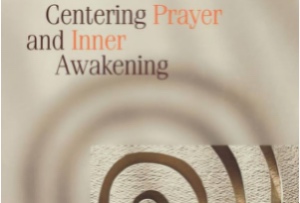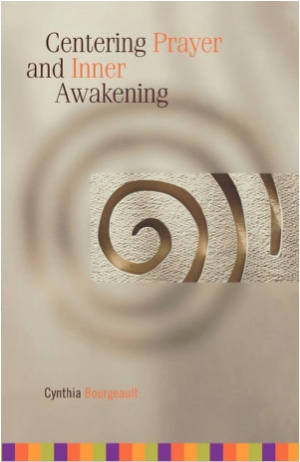
DARREN CRONSHAW reads Cynthia Bourgeault’s book about “centring prayer”…
Cynthia Bourgeault,
Centering Prayer and Inner Awakening
Cowley Pubns, Lanham, US, 2004
ISBN 978-1561012626

“Twenty minutes of [centring prayer] each day can teach our spirit to be willing to ‘lose’ our life in order to find the real thing – not through conscious effort but by intentionally allowing our self to be totally open to God.”
My spiritual director/mentor has helped me begin to respond to God’s invitation to let go of compulsiveness and descend from my head to my heart. The thought life of my mind and the tasks of my work life are relatively busy. A personal danger of this is that I can refuse to face my pain and anxiety. A contemporary ministry danger is that I might not draw on a depth of wisdom that will best help nourish my church.
I have had some experience of contemplative prayer that helps to balance my activism, yet I have felt the need for some fresh focus and guidance to ground my spirituality. This is why I looked forward to reading, digesting and practising Centering Prayer and Inner Awakening by Cynthia Bourgeault.
‘Centring prayer’ is a disposition of humility and love leading to self-surrender; “simply a wordless, trusting openness of self to the divine presence”. It moves prayer beyond simply “talking to God” and yet does not put it into a rarified form merely for monks and mystics. Developed by Father Thomas Keating and the organisation of Contemplative Outreach, Bourgeault looks at how it can draw on an authentic wisdom path for inner transformation. It is not as much about the focused concentration of meditation or using mantras of the awareness of Buddhist practice or mindfulness, but a surrender method of “heartfulness” practice. With intentional focus but without the necessity of thought, it opens up our spirit to the transformation of God’s Spirit.
The practice uses a time of silence (which John of the Cross suggested is “God’s first language”). Bourgeault helpfully explains that most of us experience a “monkey mind” with egoic thinking going in all sorts of directions. Each thought is not something to resist but gives the opportunity to practice letting go and returning to awareness of our soul dwelling with God and God with us. Sitting relaxed with eyes closed, whenever a thought arises, you let the thought go with a sacred word such as “now” or “peace”, and return to interior silence and openness to God’s presence.
Using Keating’s metaphor, it is like diving to the bottom of the river and noticing ships passing overhead, but letting them go rather than dwelling on them or returning to the surface and exploring them. Twenty minutes of this each day can teach our spirit to be willing to “lose” our life in order to find the real thing – not through conscious effort but by intentionally allowing our self to be totally open to God.
Beyond that basic pattern, I appreciated Bourgeault’s invitation to consider:
• How centring prayer can answer the postmodern search for spiritual paths and yet be grounded in Scripture, Christian tradition and Jesus’ example, and offer powerful “Divine Therapy” that purifies our “false self”;
• Opening up with apophatic prayer (bypassing our faculties) rather than just cataphatic processing (using our mind and imagination);
• Not practising silence as a tool to “hear from God” but simply to be open to transformation (independent of thinking);
• Combining centring prayer with lectio divina (prayer and word), but as a fluid process not a hierarchical “ladder”;
• Letting the “inner observer” bridging interior silence to our True Self;
• Using the “Welcoming Prayer” for self-surrender in challenges of everyday life where transformation is really honed and tested – by focusing on an upset, welcoming the pain, anger or panic (embracing the demon), and then letting it go;
• Using centring prayer as a “God Positioning System” to refocus us on our yearning for God and God’s for us;
• How centring prayer follows Jesus’ example of completely and freely giving up of our whole self; and,
• Experiencing a wisdom way of knowing from being “pure in heart” rather than an Enlightenment-formed “I think, therefore I am”.
The book is a warm and delightful guidebook to the potential and practice of ‘centring prayer’. It offers one simple and disciplined potential path to help move from the head to the heart. Bourgeault concludes: “As you nurture the heart, your ego will begin to relativize of its own accord. It can then do its real job as a useful instrument of manifestation – in the same way a violin lets you manifest the music. But you have come to know that you are not your violin.”
This is invaluable reading and all the more invaluable practice not just for monastics and retreat participants, but for ordinary Christians and college students, pastors and academics.
This review was originally published in the Journal of Contemporary Ministry Number 4 (2018), 136-137.





